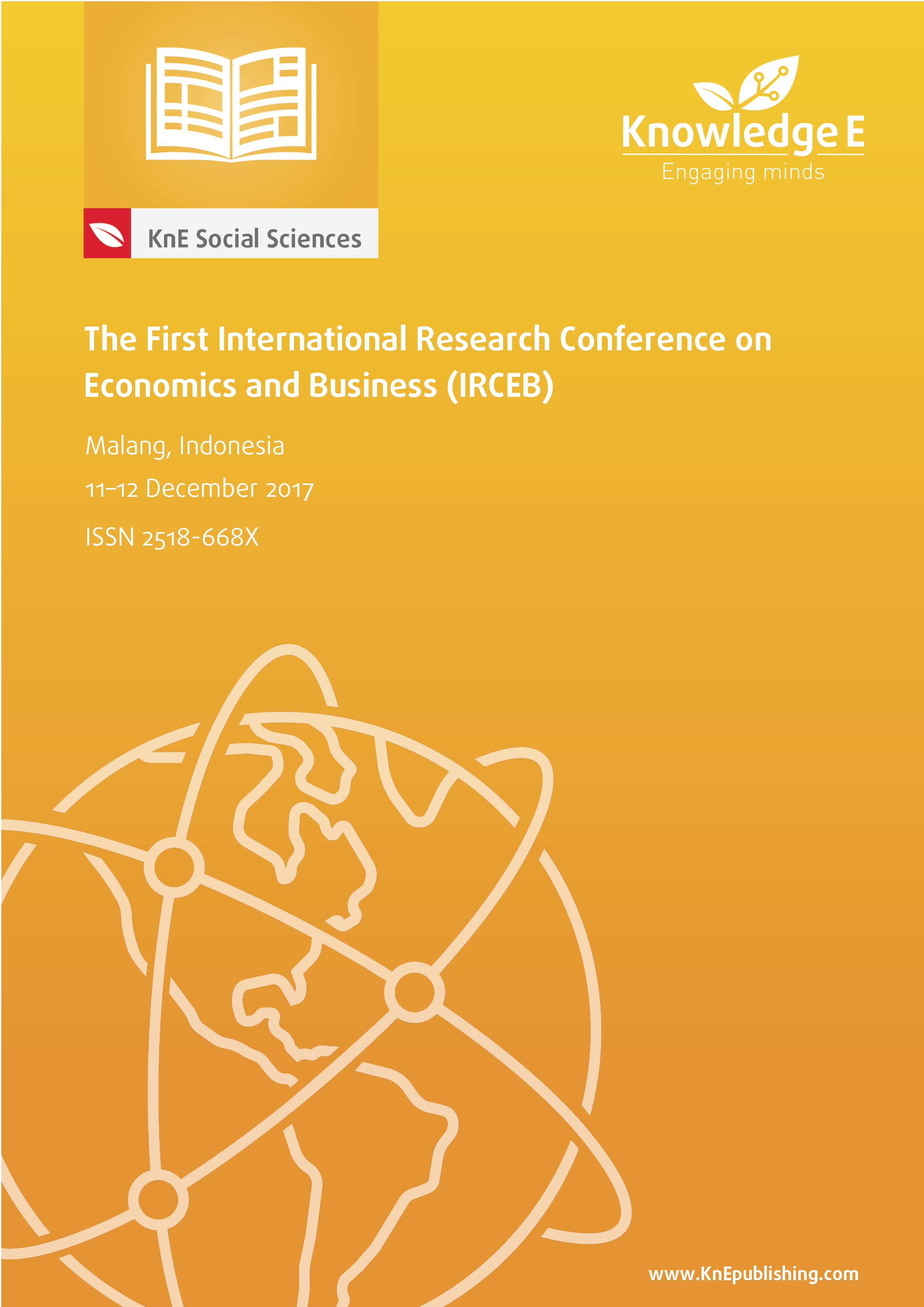Developing Best Practice in the Education of Cooperative Members
DOI:
https://doi.org/10.18502/kss.v3i3.1890Abstract
The statement that a co-ops’ member is the most important asset [22] assumes that members of the cooperative have a central position in a cooperative. The central member position is due to the cooperative being an organization of, by, and for members. Furthermore, the presence of a central position is due to members having a function as owners and users of cooperative service. Member education, as one of the cooperative principles, is necessary because the members’ knowledge of the cooperative will support the role or central position of the members. Efforts to implement member education, among others, are implemented by means of best practice development. Best practice (dictionary.com) is a procedure or set of procedures that is preferred or considered as a standard within an organization, industry, etc. Best practice development is based on organizational management experience. This research was conducted on Multipurpose Cooperative Makmur Sejati Malang. Analysis of information from key informants is done by triangulation analysis. The findings of the research indicate that the analysis of best practices is in line with the stages of development of cooperative organizations as part of member education. Best practice, in establishing Rukun Ibu for example, gives awareness to members to avoid lending activities. In addition, best practice at development stage is emphasized on member education. The fact that the fulfillment of obligations is executed by the 12th, as well as the loan service starting on the 13th of each month, instills an understanding of the need to balance the fulfillment of obligations and the utilization of rights as members of the cooperative.
Keywords: member education, best practice
References
Aminy, Aisyah (2016), Evaluasi Model Pemberdayaan Koperasi Intako pada UMKM di Sentra Industri Tas dan Koper Tanggulangin Sidoarjo Sebagai Upaya Pencegahan Kemskinan, Jurnal Pengkajian UMKM Vol 10 No1(2016), 1-16 http://csmes.smecda.com/index.php/jurnalkukm/article/view/51/44
Baxter, Pamela : Jack Susan (2008), Qualitative Case Study Methodology:
StudyDesign and Implementation for Novice Researchers,The Qualitative
Report Volume 13 Number 4 Article 2 12-1-2008„ 544-559. Retrieved from http://nsuworks.nova.edu/tqr/vol13/iss4/2
Cooperatives create sustainable growth and quality employment,Word Cooperative monitor /WWW.MONITOR.COOP,
Halim, Rizal Edy, Azia Asrul, Firmansyah (2014), Faktor Kunci Sukses Perusahaan Kecil dan Menegah dalam Menghindari Kegagalan pada periode Lima Tahun Pertama, Jurnal Pengkajian KUKM VOLUME 9, No 1 (2014) 71-84 http://www.jurnal.smecda.com/index.php/pengkajiankukm/article/view/76/70,
Kocourek, Paul; Mancini Walter J; Calderone, Matthew (2002), The Art of Best Practice Transfer, CHICAGO BOOTH, Excecutive Education October 10, 2002 / Fourth Quarter 2002 / Issue 29 (originally published by Booz & Company)
Kornginnaya, Sudha(2014),Inclusive Participation of Members in Primary Cooperatives,9th ICA Asia Pacific Regional Research Conference on ICA Blueprint for a Cooperative Decade, BICC, Bali, Indonesia, 16
Manzilati, Asfi (2017), Metodologi Penelitian Kualitatif : Paradigma, Metode,dan Aplikasi, Universitas Brawijaya Press (UB Press)
Markus Mändle,(2013),The Economics of Housing Cooperatives ExternalitiesInternational Journal of Co-operative Management Volume 6 Number 2 September 2013
Marshall, MN (1996), The key informant technique, Family Practice© Oxford University Press 1996 Vol. 13, No. 1 Printed in Great Britain (page 92-97) https://www.ncbi.nlm.nih.gov/pubmed/8671109,
Merlo, Catherine (2005) Flying the Coop (Why members leave a co-op and ways to help prevent it) Rural Cooperatives: Jan/Feb 2005: 72,1: ABI/INFORM Trade & Industry
Naegely, Stella,(2001) To Members’ Needs WesternFruitGrower.Mar2001:121.3,ABI/INFORM Trade & industry
Peraturan Menteri Koperasi dan Usaha Kecil dan Menengah Republik Indonesia Nomor 07/Per/M.KUKM/VII/2015 Tentang Rencana Strategis Kementerian Koperasi dan Usaha Kecil dan Menengah tahun 2015-2019
Scholl, Marilyn (2008) Membership Is Ownership: The Cooperative Advantage, Cooperative Groser Network136 may - june - 2008
Sitompul Anwar (2013), Mengentaskan Kemuskinan Melalui Wirausaha UMKM, Jurnal UMKM, Volume 8 Oktober 2013, 144-163
Sitorus,Jonni (2016), Peningkatan SDM Pengrajin Ulos Batak Melalui Model Pendidikan Non-Formal Berbasis Kewirausahaan, Jurnal Pengkajian KUKM, Vol 10 No 1 (2016), 47-58 http://csmes.smecda.com/index.php/jurnalkukm/article/view/55/47,
Sutrisno, Joko (2014) Menemukan Kembali Dinamika Pengembangan Koperasi Sektor Keuangan (Finding back Dynamic Development of Financial Sector CCooperative)INFOKOP VOLUME 24 NO. 1 - Oktober 2014 : 65-77, http;//www.smecda.com/jurnal/index.php/infokop/issue/download/17/28
Syarif, Teuku (2012),Pengembangan Peran Koperasi Sektor Keuangan, INFOKOP VOLUME 20 - Juni 2012 : 107-136, http://jurnal.smecda.com/index.php/infokop/article/view/151/150
Tambunan, Tulus (2013), Identifikasi Rintangan Utama bagi Koperasi Indonesia Menuju Koperasi Global INFOKOP VOLUME 23 NO. 1 - Oktober 2013 : 9-23 http://www.jurnal.smecda.com/index.php/infokop/article/view/128/128
Undang undang Republik Indoneia No. 25 Tahun 1992 Tentang Perkoperasian
Yeasmin,Sabina; Rahman,Khan Ferdousour (2012). Triangulation’ Research Method as the Tool of Social Science Research, BUP JOURNAL, Volume 1, Issue 1, September 2012, ISSN: 2219-4851 http://www.bup.edu.bd/journal/154-163.pdf
Youssef, Hanan & Herbert, Yuill,(2014) Closing the inequality gap,The Magazine for clean capitalism Corporate knight, 8 Oktober 2014,
Zeull, A Kimberly & Cropp Robert (2004), Cooperatives : Principles an Practice in the 21 ST century, Wincosin Country Extension Office,

